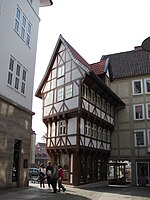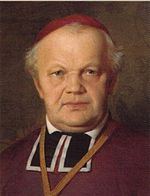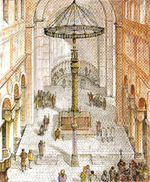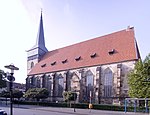Butchers' Guild Hall, Hildesheim
1529 establishments in the Holy Roman EmpireBuildings and structures completed in 1989Buildings and structures in HildesheimGuildhallsGuilds in Germany ... and 2 more
Rebuilt buildings and structures in GermanyTourist attractions in Hildesheim

The Butchers' Guild Hall (German: Knochenhaueramtshaus) is a half-timbered house in Hildesheim in the federal state of Lower Saxony, Germany. Today the reconstructed Butchers' Guild Hall houses a restaurant and the City Museum. Every year, a traditional Christmas Market is held in front of the Butchers' Guild Hall. It starts in the last week of November and runs through to Christmas Eve. Traditional products and handicrafts, Christmas merchandise, and local delicacies are offered.
Excerpt from the Wikipedia article Butchers' Guild Hall, Hildesheim (License: CC BY-SA 3.0, Authors, Images).Butchers' Guild Hall, Hildesheim
Markt, Hildesheim Stadtmitte (Stadtmitte/Neustadt)
Geographical coordinates (GPS) Address External links Nearby Places Show on map
Geographical coordinates (GPS)
| Latitude | Longitude |
|---|---|
| N 52.1528 ° | E 9.95139 ° |
Address
Knochenhaueramtshaus
Markt 7
31134 Hildesheim, Stadtmitte (Stadtmitte/Neustadt)
Lower Saxony, Germany
Open on Google Maps









